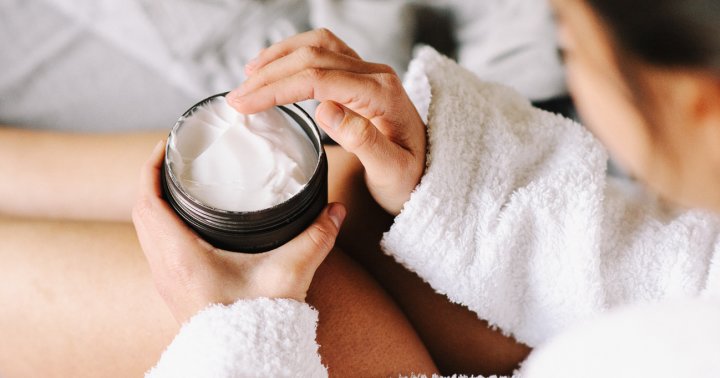If You Really Want Your Hair To Grow, You Need To Start By Doing This
Surprisingly uncomplicated.


Assistant Beauty & Health Editor
Assistant Beauty & Health Editor
Hannah Frye is the Assistant Beauty Editor at mindbodygreen. She has a B.S. in journalism and a minor in women’s, gender, and queer studies from California Polytechnic State University, San Luis Obispo. Hannah has written across lifestyle sections including health, wellness, sustainability, personal development, and more.
Image by Delmaine Donson / iStock September 15, 2023 Embarking on a hair growth journey can be quite daunting. Should you start with serums? Supplements? Scalp massage? Maybe in-office treatments? Ultimately, it depends on which cause of hair loss you're dealing with, but here's one tip I've heard countless scalp and hair experts deem the best first step. 
Advertisement
This ad is displayed using third party content and we do not control its accessibility features.
Why you should look at your scalp consistently
The best tip to start: Look at your scalp. I mean, really look at it. Part your hair in different ways, look at when it's both wet and dry, get up close in the mirror, and investigate each part of your scalp to grasp a better idea of what's going on underneath your stands.
When you neglect regular check-ins with your scalp, you might miss the prime window for treating any problems before they become worse. It's just like skin care: If you don't look at your skin in the mirror, you might miss a subtle reaction to a product and continue using it until you experience a full-blown rash or other adverse reaction.
This is especially true for anyone trying to speed up hair growth, as you can spot plenty of interruptions and patterns with a simple look in the mirror. Below, find some red flags to look for:
If you're already experiencing hair shedding or hair loss, looking at your scalp may help you understand what's causing the fallout. For example, a receding hairline in women might be caused by frequent tight hairstyles that pull the strands back or hormonal imbalances. General thinning may be caused by increased stress, menopause, certain medications, and the list goes on.
While your scalp won't give you an exact report card of what's happening inside your body, it is helpful to know where you're losing hair if you decide to visit a professional for help. Plus, it can help you decide which areas to target with hair growth serums, should you want to use them.
Advertisement
This ad is displayed using third party content and we do not control its accessibility features.
3 quick scalp care tips:
Even if your scalp looks A-OK, it's important to know what steps to take to maintain a healthy, happy environment for growth. Think about how you treat the skin on your face: You wouldn't skip your skin care routine just because your skin looks healthy, would you? The same goes for the scalp. Below, some overall maintenance tips:
Advertisement
This ad is displayed using third party content and we do not control its accessibility features.
If your scalp concerns aren't improving with at-home care, don't hesitate to see a dermatologist—they have access to treatments and other medical interventions you may want to consider.
The takeaway
If you want your hair to grow faster, take a look at your scalp. By examining this skin in the mirror, you'll be able to spot buildup, flakes, irritation, or other irregularities that may prevent your strands from reaching their full potential. Looking for more scalp care tips? Here's a full guide.

 Astrong
Astrong 































